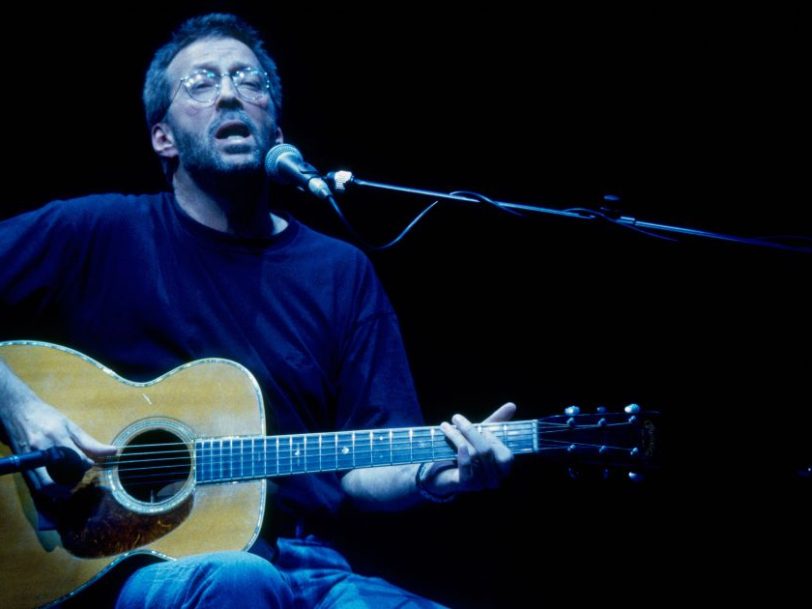Eric Clapton’s signed cheque for $100 ended up framed in a Warner Records executive office. It was in payment of a bet Clapton had with his then manager, Roger Forrester, about whether the Unplugged album would be successful. “I didn’t really want it to be an album, to be honest, and I bet Roger that it wouldn’t sell. I mean wouldn’t sell anything,” the guitarist recalled in 2012. He could not have been more wrong. Released on 25 August 1992, Unplugged became the best-selling live album of all time, with 26 million copies sold worldwide.
Listen to Eric Clapton’s ‘Unplugged’ album here.
“I was shocked at the sales – and very pleased”
The album was the audio recording of a concert shown as part of the MTV Unplugged series – a show that began in 1989 and which had already featured Sting, Paul McCartney and Mariah Carey – and filming was kept secret. The studio audience of 300 was made up of 100 invited guests and 200 winners of a BBC Radio 1 quiz, and they met in central London on Thursday, 16 January 1992, to be taken in coaches to Bray Studios, in Berkshire, for a concert beginning at 6.15pm. The audience had all been asked to wear dark clothes, to fit in with a set that used drapes to create the feel of a nightclub.
Clapton credited guitarist Andy Fairweather Low with restructuring four of his original songs and a range of blues classics so they would work in an acoustic context, calling him the “backbone” of the project. Clapton and Fairweather Low rehearsed for a week in Chelsea and then spent two days with the rest of the band working out how to play the set acoustically. Keyboardist Chuck Leavell, a noted member of The Allman Brothers Band and a veteran keyboardist for The Rolling Stones, was joined by Nathan East (bass), Steve Ferrone (drums) and Ray Cooper (percussion). There were challenges for all of them. Ferrone had to replace his drumsticks with thunder-rods – small strips of wood that allowed him to reduce the volume of the drumming. East, used to playing an electric bass, had to quickly get used to a new acoustic double bass.
“It was encouraging that my abilities in their most basic form had some kind of appeal”
The recording of the Unplugged album came during a traumatic time for Clapton, when he was still processing his grief over the tragic death of his four-year-old son, Conor. “A lot of the music in Unplugged was linked to the passing of my son and the long dark period after it,” he said. This included the instrumental Signe, which had been written on a boat after his son’s death and was now chosen to open the show. Clapton also sang a plangent version of Tears In Heaven, a lament for the child who, less than a year earlier, had accidentally slipped from the 53rd-floor window of a New York City apartment building. The version on Clapton’s Unplugged album is a masterful example of how an artist can sometimes channel pain into memorable music.




